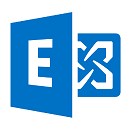Cluster Administration from PowerShell and the Infamous Back Tick
Of course we all know by now how powerful PowerShell is. “It slices, it dices, it makes julienne fries, whatever those are!” to quote Ron Popeil
One of the cool things with PowerShell is that you can call some external programs. While waiting for some hardware to arrive on a project, I was scripting the setup of a two node Single Copy Cluster (SCC) install of Exchange 2007. One thing you want to do with an Exchange SCC cluster in 2007 is assign dependencies for resources. Say you have a mailbox database called “First Storage Group/Mailbox Database”, and it resides on the cluster resource called “Disk S:”. Well, when the cluster starts up, it should wait for “Disk S:” to be online before trying to bring the “First Storage Group/Mailbox Database” resource online. It only makes sense, right?
Back to my project. So I’m able to script the creation of the storage groups using something like
New-StorageGroup SG1 -SystemFolderPath G:\SG1 -LogFolderPath K:\SG1
from there, I create a new database
New-MailboxDatabase -Name DB1 -StorageGroup SG1 -EdbFilePath G:\SG1
I set some configuration on the new database
get-mailbox | set-mailboxdatabase -DeletedItemRetention 14.00:00:00 -MailboxRetention 30.00:00:00 -IssueWarningQuota unlimited -ProhibitSendQuota unlimited -ProhibitSendReceiveQuota unlimited -PublicFolderDatabase "Second Storage Group\Public Folders" -RetainDeletedItemsUntilBackup:$true -MountAtStartup$true
Life is good. Now, I need to assign the cluster dependencies for the new database resource. But first, the database needs to be unmounted to assign the dependency. So, we precede the cluster command with:
get-mailboxdatabase | dismount-database
Then we can do the dependencies. From a command prompt,
Cluster cluster1 res "SG1/DB1 (MbxCluster1)" /AddDep:"Disk S:"
would work beautifully. It would assign the “Disk S:” cluster resource as a dependency for the new database. But PowerShell wouldn’t accept that syntax, telling me
“Too many command line parameters have been specified for this operation…”
Seems PowerShell doesn’t like the special characters there, and they need to be escaped with a back tick (on an English keyboard, that’s the key to the left of the “1”). After some noodling around, and the help of Ross and Scott, this seems to work:
Cluster cluster1 res ` "SG2`/DB3 `(MbxCluster1`) `" `/adddep: `"Disk S: `"
Not the cleanest of lines, but I’m able to keep everything within a single PowerShell script. Normally, I would have given up and just manually done the dependency configuration, except that this project will involve dozens of databases, and, like many engineers, I’m lazy. Plus, I should know this limitation for the future, as it streamlines the setup of the cluster.
We can now mount the databases with
get-mailboxdatabase | mount-database
I use those broad commands to essentially handle all of the databases, since the script sets them all up at the same time.
Note: I know, we should not have databases with no quota limits on them. But this is a GroupWise to Exchange 2007 migration. So I leave them unlimited till the migration is complete (to avoid migration problems), and then I’ll clamp them down for safety.
As you can see, we can essentially setup all of the SGs and DBs, and assign the cluster config all from within PowerShell. If you’re looking for a great book on PowerShell for Exchange 2007, check out Professional Windows PowerShell for Exchange Server 2007 Service Pack 1 @ Amazon.com. It’s an easy read, but quite informative.






Follow Me